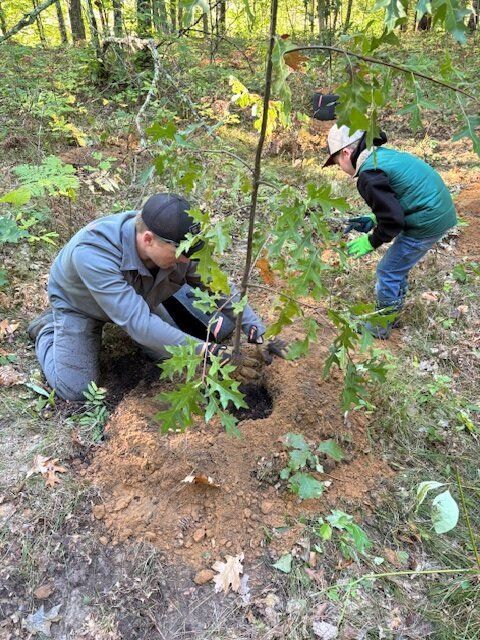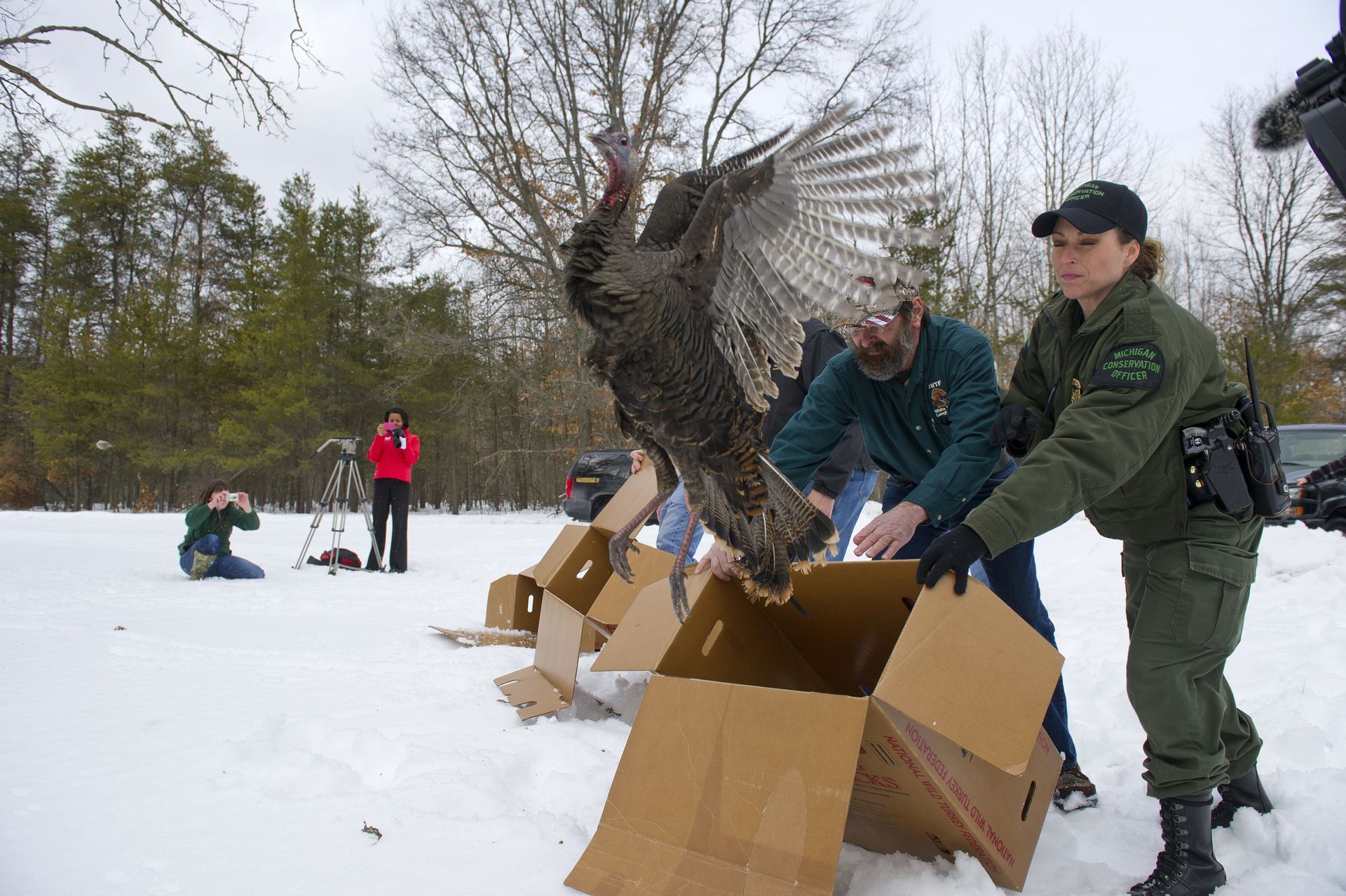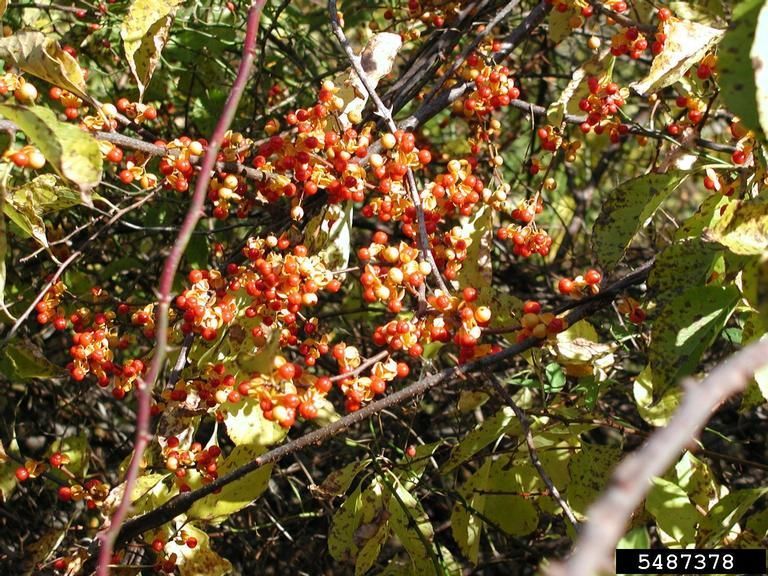Thankful for Wild Turkeys
Many households across the United States are celebrating the annual holiday of Thanksgiving today. With loved ones close by and delicious aromas coming from the kitchen all day, some may forget to be thankful for the turkey itself. It may not be widely known, but Michigan turkey populations were once in peril and may not be in the state without conservation action.

History
While it is not uncommon to see turkeys in fields off the side of the road today, the Michigan population was once at risk of extirpation by the 20th century. During a National Wild Turkey Federation (NWTF) interview with Chad Stewart, the DNR upland game bird specialist noted the last Michigan wild turkey recorded was taken in 1897. Extirpation is when a species is extinct in an area with living populations in another geographic region. Contributing factors to this decline are likely due to habitat loss and overexploitation by hunters. The turkeys tend to nest in hay fields and contribute to crop damage, likely leading to high species harvest rates to control economic loss.
After the possibility of the turkey population being extirpated was recognized, organizations took action in the mid-1900s to re-establish the population. This was done by importing 50 individuals from other states with thriving populations to encourage new population establishment where there was historical success. This conservation action is likely the reason we have turkeys today with a stable enough population to have hunting seasons.
Current Status

The Michigan DNR currently oversees a fall and spring turkey hunting season with applications for a license drawing. Unsuccessful applicants who are not chosen can get a leftover license on a first-come, first-serve basis. For more information regarding the hunting season dates, visit the current year's regulation handbook.
NWTF played a key role in turkey conservation with their Conservation Seed Program for private landowners. The seed subsidy allows organization members to purchase seed at reduced costs for habitat. Additionally, Michigan United Conservation Clubs (MUCC) members save 10% on orders with Domain Outdoors for high-quality food plot seeds if you want to start creating wildlife habitat. The MDNR also conducts a turkey brood survey annually between July 1 and August 31 where the public can record their observations for population monitoring. Surveys like these are an important part of the conservation process as any dangerous declines in population can be detected and the appropriate actions can be taken including limiting the hunting season.

Characteristics
Turkeys can be found almost anywhere in Michigan so they can be relatively easy to identify with some practice. This large game bird has long legs much larger than a chicken due to its proportionate size. While these birds often roost in trees at night to be protected from predators, they are commonly found on the ground and typically fly off ridges to minimize energy expenditures. However, MSU Extension reports the birds being able to reach 55 mph while flying and 25 mph when running.
Both males and females have featherless heads, however the male has a more vibrant color pattern with reds and blues. Additionally, males have more contrasting colors in their feathers, a beard on their chest, and a large snood over their beak. Male turkeys typically weigh more than females anywhere between 11 and 25 pounds. All these characteristically male features contribute to the mating choices of females. During mating season, males can be found puffed out to look large and intimidating with all their feathers on display.
Turkeys typically nest on the ground and will take dust baths in sandy fields. They can be found in open grasslands or forests where they can find food sources like seeds, berries, and insects as described by MSU Extension. To defend themselves in these open areas, most males have spurs on their feet.
In contrast, turkey vultures can be mistaken for turkeys due to similarities in their heads and body size. However, vultures have less contrast in their feathers and typically have a more slender body. These birds can commonly be found near roads or anywhere they can scavenge for food.
Get Involved
If you are looking to take part and potentially be one of the driving forces of a conservation success story like this, consider volunteering at an On the Ground habitat project. MUCC improves habitat for many game species in addition to endangered or threatened species, consider joining today to help us continue this work. Additionally, NWTF is a national organization dedicated to improving habitat for turkey conservation and sportsmen and women across the country.



